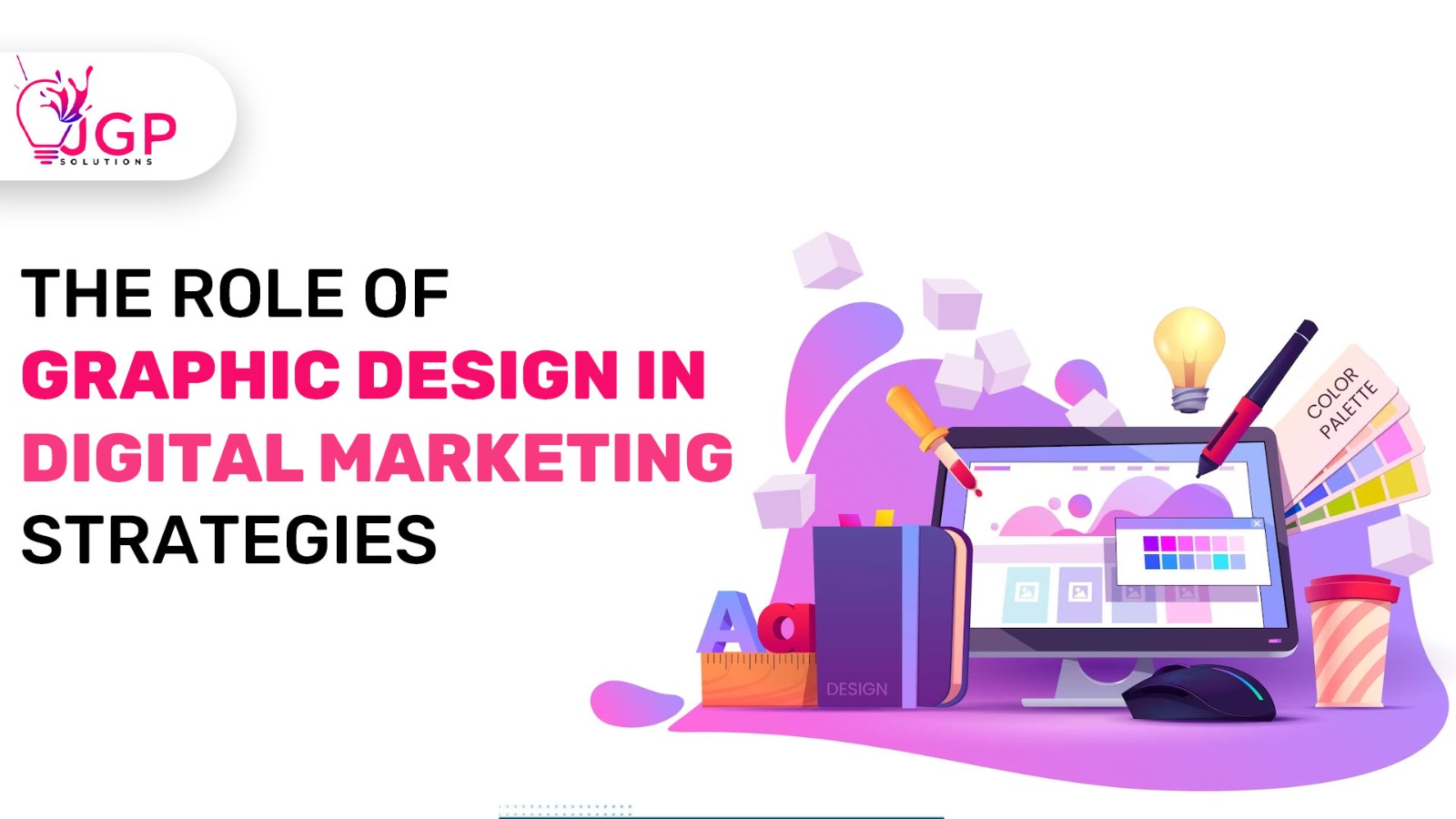Introduction: Graphic design in digital marketing
In the ever-evolving world of digital marketing, where attention spans are fleeting and first impressions matter more than ever, the visual appeal of content plays a pivotal role. Graphic design in digital marketing, with its ability to communicate messages through visual elements, has become an indispensable aspect of digital marketing strategies. In this comprehensive exploration, we’ll dive into the crucial role graphic design plays in the digital marketing landscape, examining its impact on brand perception, user engagement, and overall campaign effectiveness.

- The Visual First Impression:
In the fast-paced digital realm, capturing the audience’s attention within seconds is a formidable challenge. Graphic design in digital marketing serves as the gateway to make that vital first impression. Whether it’s a social media post, a website banner, or an email newsletter, the visual elements created by graphic designers are the initial touchpoints that can either captivate or repel potential customers. A compelling visual design sets the stage for a positive user experience and encourages further exploration.
- Branding Consistency:
Consistency is key in building a strong and recognizable brand. Graphic design ensures that a brand’s visual elements, such as logos, color schemes, and typography, remain consistent across various digital platforms. This consistency fosters brand recognition and trust, as users come to associate specific visuals with the brand. A well-executed graphic design strategy aligns visual elements with the brand’s identity, creating a cohesive and memorable brand image.
- Social Media Impact:
In the era of social media dominance, graphic design plays a central role in driving engagement and conveying messages effectively. Visually appealing posts, infographics, and videos are more likely to be shared and liked, increasing the reach of the content. Platforms like Instagram and Pinterest thrive on visually-driven content, making graphic design a linchpin in successful social media marketing strategies. Creative and shareable graphics amplify the brand’s presence and foster a sense of community among followers.
- Website Aesthetics and User Experience:
A website is often the first point of contact between a brand and its audience. The visual aesthetics of a website, from layout to images and icons, significantly impact user experience. Graphic designers collaborate with web developers to create visually pleasing and user-friendly interfaces. Intuitive navigation, appealing visuals, and a cohesive design contribute to a positive user experience, keeping visitors engaged and encouraging them to explore further.
- Email Marketing Design:
Email marketing remains a potent tool for businesses, and graphic design enhances its effectiveness. Well-designed email templates, visually appealing product images, and strategically placed call-to-action buttons can significantly improve click-through rates. Graphic designers bring creativity to email campaigns, ensuring that messages are not only compelling but also visually aligned with the brand’s identity. Aesthetically pleasing emails stand out in crowded inboxes, increasing the likelihood of user engagement.
- Infographics for Information Delivery:
In the digital age, information overload is a common challenge. Graphic designers address this by creating infographics that present complex information in a visually digestible format. Infographics are highly shareable and have the potential to go viral, making them an effective tool for conveying statistics, data, and other information in an engaging manner. They are particularly useful in content marketing, where the goal is to communicate information clearly and memorably.
- Interactive Design Elements:
As Graphic design in digital marketing evolves, interactive design elements are gaining traction. From interactive website features to engaging social media polls and quizzes, graphic designers play a crucial role in creating visually appealing interactive content. Interactive elements not only enhance user engagement but also provide valuable data and insights for marketers. Gamification, in particular, is becoming a popular strategy, and graphic designers are instrumental in creating visually enticing games and challenges.
- Video Content and Motion Graphics:
The rise of video content in digital marketing underscores the importance of motion graphics and visual storytelling. Graphic designers contribute to the creation of visually striking video content, incorporating animations, transitions, and dynamic elements. Whether it’s a short promotional video or a longer-form piece of content, the visual appeal is a determining factor in capturing and maintaining the viewer’s attention. Motion graphics enhance storytelling, making content more compelling and shareable.
- Adaptation to Responsive Design:
With the prevalence of mobile devices, responsive design has become a non-negotiable aspect of Graphic design in digital marketing. Graphic designers are tasked with creating visuals that adapt seamlessly to different screen sizes and resolutions. This includes optimizing images, ensuring legibility of text, and maintaining the overall visual integrity of the content. Responsive design is not just a technical requirement; it’s a visual design challenge that graphic designers tackle to provide a consistent experience across devices.
- Metrics and Testing for Optimization:
Graphic design doesn’t end with the creation of visuals; it extends to analyzing performance metrics and optimizing based on data. A/B testing of visual elements, such as different ad creatives or landing page designs, allows marketers to identify what resonates best with their audience. Graphic designers collaborate with marketers to iterate on designs, making data-driven decisions to enhance the effectiveness of digital marketing campaigns.
Conclusion: Graphic design in digital marketing
In the dynamic landscape of digital marketing, Graphic design in digital marketing emerges as a cornerstone for success. From creating visually appealing content that captures attention to ensuring brand consistency across various platforms, graphic designers play a pivotal role in shaping the overall digital experience. As brands continue to vie for the attention of online audiences, those that prioritize and invest in compelling graphic design will not only stand out but also forge deeper connections with their target market. In essence, the aesthetic advantage provided by graphic design is not just a visual delight; it’s a strategic imperative for businesses navigating the digital marketing terrain.





